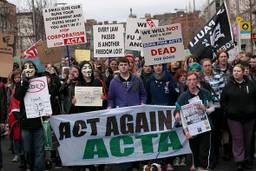Goldman Sachs will be investing $9.6 million in a youth inmate rehabilitation program at New York City’s Rikers Island jail, in a new initiative announced today by Mayor Michael Bloomberg. The program targets 16- to 18-year-old inmates—50 percent of whom traditionally end up back in jail within a year of release. If the Goldman-backed program decreases that rate by 10 percent over four years, they will make back their investment. If the decrease is larger, Goldman stands to make up to $2.1 million in profit. And if it drops by anything less, the firm will lose up to $2.4 million.
Goldman’s investment will go toward a non-profit group already in place in the prison, and the investment is to be repaid by the government—at the end of the four-year period, the city will pay Goldman back accordingly. However, Mayor Bloomberg has also guaranteed to personally compensate any losses Goldman might have.
The investment is the first in Mayor Bloomberg’s new ‘social impact bond’ initiative, which he hopes will spur further private investment in public-interest causes. The idea comes from Great Britain, where it has been touted and advanced by the coalition government since the first pilot program in 2010. More recently, President Obama included funding for a similar program in his 2012 budget.
The New York City program already has strong critics. Jason Farago writes at The Guardian:
You might wonder why, since reducing crime and offering better lives to past offenders are obvious social pluses, the government doesn’t just pay for such a program itself. … Alas, this is the nature of Bloombergism. There is no social problem that can’t be reduced to metrics, no public function that an unaccountable private undertaking can’t perform better, and no incentive like the profit motive.
Indeed, public-private ventures into the penal system are proving to be problematic in many cases. In June the New York Times June detailed New Jersey’s struggling halfway house system. Since 2005, around 5,100 inmates have escaped from privately run halfway houses in the state. In Mississippi, the Justice Department found egregious 8th Amendment violations at a privately run youth detention center, leading the company to leave the state. Meanwhile, in Louisiana the New Orleans Times-Picayune found subpar conditions in prisons that are run for profit. Louisiana, incidentally, has the highest incarceration rate in the country.
And there are critiques of social impact bonds more generally. David Henderson, who writes about philanthropy for idealist.org, argues that Social Impact Bonds won’t help improve philanthropy because they don’t address current issues with philanthropy programs like how to measure results:
Ultimately, ideas like Social Impact Bonds and non-profit market exchanges that mirror the world of finance dance around, rather than address, the core issues facing the social sector. … We are so enamored of the giving and investing aspects of philanthropy, yet our eyes glaze when the charts and logic models come out.
This is to say nothing of the idea that tax money is being used to cover the potential profits on the bonds. At least in the case of Goldman there is a certain full-circle quality: Not long ago some were calling for the arrest of Goldman Sachs bankers, and now those bankers are tasked with preventing the arrest of others.
Isaac Dalke is a summer 2012 In These Times editorial intern.




